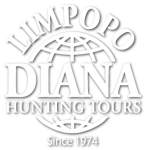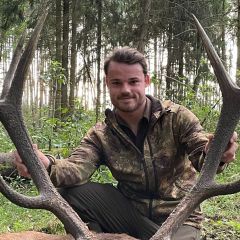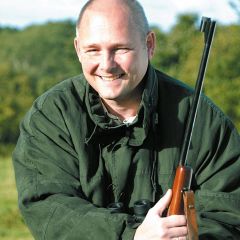Greenland
Experience the incredible scenery and unique hunting found only in Greenland
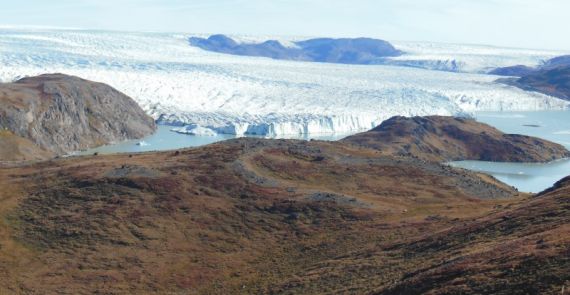
Highligts
- Exceptional Nature
- Excellent Hunting for Musk Ox
- Temperatures below -30 ° C
- Strong Hunting Traditions
Hunting i Greenland
Greenland is the world’s biggest island, lying where the North Atlantic meets the Arctic Ocean. 85% of Greenland’s landmass is covered by the inland-ice and glaciers which stretches 2,500km from north to south and is around 1,000km wide and up to 3km thick.
Despite the arctic climate the weather at the head of the huge fjords is generally more stable than on the coast. The winter period tends to be dominated by higher pressure systems that give syable, dry weather with blue skies and plenty of sunshine. The temperature is generally between -20 og -25 °C but you can experience temperatures right down to below -30°C. occasionally you can experience days wind and snow and even temperatures above zero (føhn), which can remove all the snow in a few hours. You can still travel by dog sledge as long as the ground is frozen and there is ice on the lakes and rivers.
Søndre Strømfjord or as it is called in Greenlandic - Kangerlussuaq - is transected by the Arctic circle, which means in summer it never really gets dark, while in mid-winter there is nearly no light apart from moonlight and the fantastic northern lights. During March, when the hunt takes place, there is more than 12 hours daylight per day, as the day quickly get longer at these latitudes.
Despite an area of around 2 million km2 only around 56.000 people live in Greenland, most of whom are inuit. Fishing, trapping, and hunting seals, birds, reindeer and musk ox is still the major industry
The musk ox has just been included in the European Grand Slam. The musk ox is a tundra dweller, it is more closely related to the goats and sheep than true cattle, but is its own seperate genus. MThe musk ox is native only to the east coast of Greenland, the fjords, glacier and mountains preventing it from “colonising” all of the huge island. At the start of the sixties 27 musk oxen were released near Kangerlussuaq - on an open hunting district of some 6.600 km2. Over the space of 40 years it has been estimated that the population has grown to number at least 7,000 individuals. The vegetation and hence availability of fodder in this area is so good that here musk ox grow to be 15% larger than elsewhere in Greenland, a fully grown bull can reach a weight of 375kg.
Hunting stories
Ulrik på Grønland
An update more from Greenland
Here are some pictures from our trip to Greenland. We flew to Søndre Strømfjord, where we were picked up in a helicopter and transported to the camp, which were a two hours walk from the inland ice – a very big experience. Marlene, Mathias and their staff delivered a really good service. They were really competent and kind people.
The hunt for muskox was really exciting. It’s not really the biggest hunting challenge, besides the adrenalin rush which is pumping in your veins, when you get really close to the big animals (They can weigh up to 450 kg). On the other hand, the reindeer hunt was really tough – About a 10-hour march in a demanding terrain.
We were 4 hunters in the camp and all together we shot 6 muskox, 7 reindeer, 1 mountain hare and 2 arctic foxes.
Best regards
Ulrik
The nature in Greenland is fascinating.
Game
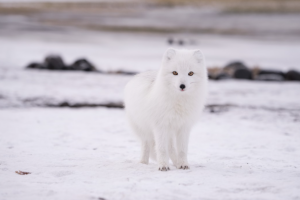
Arctic Fox
Videnskabeligt navn: Alopex lagopus Underarter/Udbredelse: 10 underarter er beskrevet, hvor 3 underarter forekommer i regionen: 1. Alopex l. lagopus: Kontinentale dele af Rusland (Nordsibirien inklusive Kamschatka), 2. Alopex l. semenovi: Medny-øen 3. Alopex l. beringensis: Bering-øen. Levested: Sne og isdækkede områder, omkring nordpolen. Beskrivelse: Denne...
Read more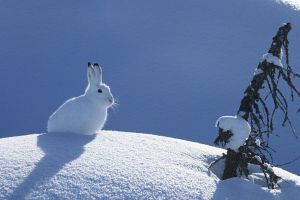
Arctic hare
Scientific name: Lepus arcticus groenlandicus Distribution: Arctic hares in Greenland are found in the Arctic regions, including the tundra and open mountain plateaus. Habitat: Arctic hares in Greenland primarily inhabit tundra areas and open mountain regions. Description: Arctic hares are medium-sized mammals specialized for life in cold climates. They have a seasonal coat that changes from...
Read more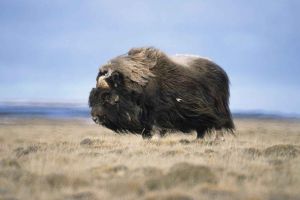
Musk Ox (North America)
Scientific Name: Ovibus moschatus Subspecies: Circumpolar in the northern hemisphere. One subspecies in North America: Alaskan Musk Ox. (Ovibus m. moschatus): Alaska, Canada (Introduced on the Nunivak Islands, Alaska). Habitat: Tundra in the north. Description: Large sheep, weighing around 410 kg and measuring up to 1,50 m over the shoulder, reaching a total body length of 2,50 m. The coat is...
Read more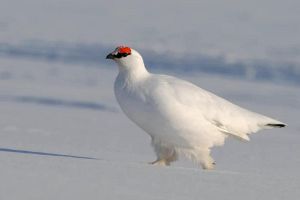
Ptarmigan
Scientific name: Lagopus muta Subspecies: 20 - 30 subspecies. Distribution: The ptarmigan inhabits mountains and northern tundra areas in Scandinavia, Iceland, Greenland, Scotland, and Siberia. Habitat: Tundra and open mountain plateaus. Description: The ptarmigan is a bird that adapts its plumage color according to the season. In summer, the ptarmigan's plumage is often brown with gray-white...
Read more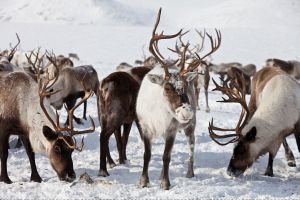
Reindeer (Europe)
Videnskabeligt navn: Rangifer tandarus Underarter: Grønlands ren (Rangifer t. groenlandicus) Udbredelse: Norge, Sverige, Finland, Rusland, Island og Grønland. Levested: Tundra og åbne fjeldvidder. Afhængig af sted og årstid træffes renen også i skov. Beskrivelse: Stor hjorteart, der opnår en skulderhøjde på op til 120 cm og en...
Read moreHunting Area
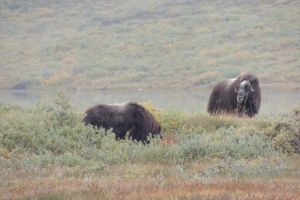
Hunting Area - Summer hunt in Greenland
Søndre Strømfjord or as it is called in Greenlandic - Kangerlussuaq - is transected by the Arctic circle, which means in summer it never really gets dark, while in mid-winter there is nearly no light apart from moonlight and the fantastic northern lights.
Read more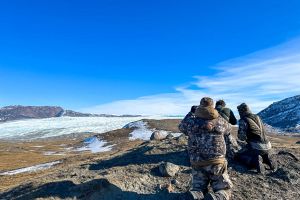
Hunting Area - Winter hunting on musk oxen
The hunting district is in a beautiful location by a large lake close to the Inland-ice, around 35km from Kangerlussuaq in West Greenland. Søndre Strømfjord or as it is called in Greenlandic - Kangerlussuaq - is transected by the Arctic circle, which means in summer it never really gets dark, while in mid-winter there is nearly no light apart from moonlight and the fantastic...
Read more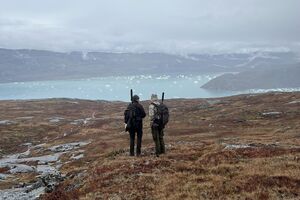
Hunting area near Nuuk
The terrain is very hilly, and one must be able to hike between 10 and 20 km per day, with up to 1000 meters of elevation gain. Here, it is the weather, the wind, and the animals that set the pace, and we are merely guests. In the areas we hunt, there is virtually no infrastructure, which naturally also requires proper safety equipment and signaling devices. The terrain is very uneven and in...
Read morePartner
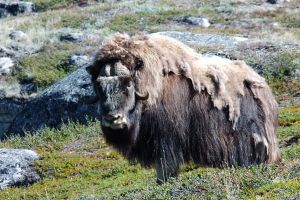
Partner - Greenland
We have a wonderful working relationship with Inuit Outfitting run by Mathias and Malene Ingemann. They were the first outfitters to arrange trophy hunting for tourists after the Greenland Home Rule opened up the possibility to do so back in 1996, and since then they have built up a lot of experience in this specialised field.
Read more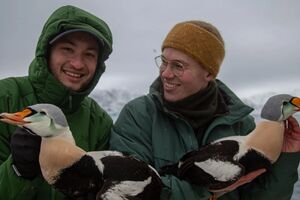
Partner in Nuuk
Our partner in Nuuk is Nuuk Outdoor which is owned by Kenneth Thomsen from Denmark. Nuuk Outdoor is a company that offers tour/charter boat trips to business clients and tourists. They have boats licensed for 3 passengers. Kenneth has lived on Greenland for 13 years, and has also taken part in the Sirius patrol. In recent years he has arranged hunting, fishing and wildlife tour in the district...
Read more